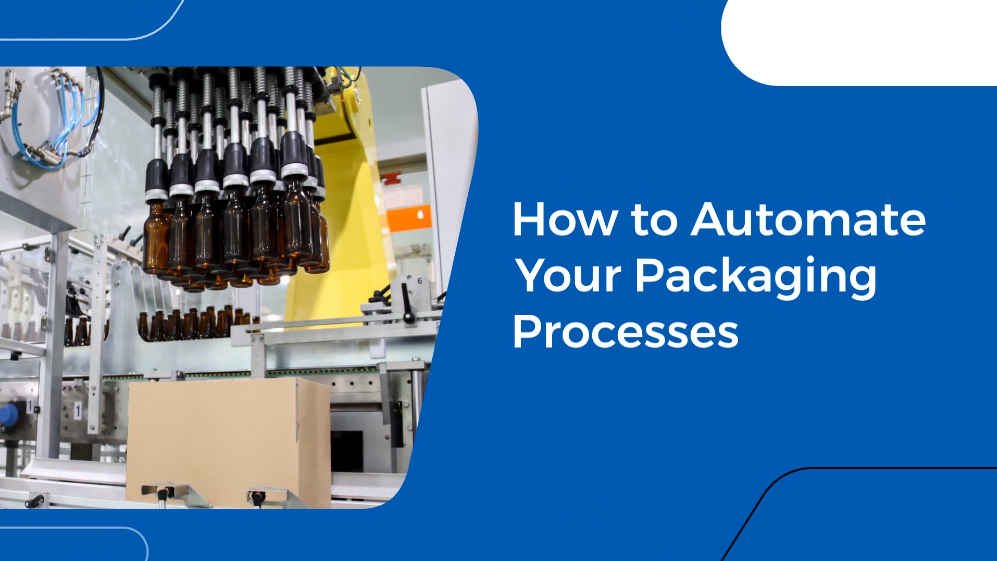How to Automate Your Packaging Processes
TPC Packaging Solutions is an industry leader in superior automated packaging products and services. We’ve seen firsthand that companies have major incentives to learn how to automate packaging, but initially approach it solely as a matter of purchasing select equipment or adopting new processes.
The reality can be far more complex, and for the most complex packaging, it may not be an option. The simpler your packaging needs are, the more likely it can be automated without exceeding your budget. If you’re wondering how to automate your packaging process, what exactly do you need to know?
What To Consider When Automating Your Packaging Process
Repetition, precision, cost, and space are all core considerations when exploring how to automate packaging. First, you must determine whether it can, or should, be done according to your specific packaging needs and processes.
- Repetition: Simpler packaging procedures involve high amounts of repetition, but fewer intricate tasks. Determining which actions predominate your manual packaging procedures is the first step to identifying which packaging processes will have the greatest impact when automated.
- Precision: Similarly, look at how exact the automated processes must be. More precise packaging functions with tighter tolerance ranges will require precision instruments to match. If a packaging process is difficult for manual laborers, robotics will probably not be able to perform the task more effectively.
- Cost-effectiveness: What is your ROI threshold for automation equipment and related expenses? Packaging automation systems can cost upwards of $1 million. Determine how much time and cost savings you stand to gain, taking into account labor, materials, and equipment costs.
- Space: How packaging automation will impact your facility is equally important. Consider the new equipment’s footprint and how it will alter the layout of your facility.
Ways To Automate Your Packaging Process
Robots are now affordable enough that mid-market companies in a multitude of industries have adopted them. Still, robotic automation is often only applied to manufacturing and distribution. Packaging automation is the next logical step in streamlining operations and reducing costs. It’s an investment that requires system-wide changes beyond the one-time purchase of new equipment. Those learning how to automate packaging should consider it an investment that goes beyond equipment, encompassing an entirely new system, workflow, and learning curve.
Automation packaging systems require numerous components to be synchronized correctly for reliable functioning. Depending on your packaging needs, this could include any combination of the following:
- Robotic Packing Systems: A robotic packing system can facilitate many distinct functions at once. Labeling and coding products, inspecting containers and shelves, accurately identifying your specific range of products, and self-timing and -adjusting with the other automated packaging components are just several important factors.
- Motion Control & Synchronization: Motion control involves managing the flow of goods through the automated packaging process. This is most easily applied to pharmaceutical products, food, drinks, and related items. Palletizing cases and boxes is one application that remains challenging for motion control and process synchronization, as boxes or cartons must be placed in a stable configuration to prevent tipping.
- Semi-Automated Pallet Wrappers: Though palletized items often vary in size, shape, and weight, partial automation is still possible — particularly in pre-stretching and -positioning wrapping materials for easier application. They also reduce material waste, cutting costs and operating expenses.
- Form Fill Seal Machine: Packaged food and other perishable products particularly benefit from automated sealing, filling, and forming packages, which become more durable. Modern form-fill-seal machines automatically notify operators when an improper seal is detected, reducing waste and liability.
- Smart Equipment Sensors: Tracking and tracing products is very important, especially when perishable items are involved. Along with expiration or best-by dates, batch and lot codes can easily be indexed for superior reviewing purposes and granular control of the movement of packaged goods. Additionally, sensors streamline products and container counting. This further assists in any sanitization processes, where accurate accounting of individual containers and various container properties is essential.
Need Help Automating Your Packaging Process? Call TPC Packaging Solutions
Learning how to automate packaging is far from a one-size-fits-all process. It can challenge the way you manage your entire packaging process, and the type of equipment, materials, and procedures it requires fully depends on your exact packaging needs.
After considering process repetition, accuracy, and tolerance windows, profit thresholds, and required facility alterations, it’s necessary to compare the different packaging automation components and consider how they fit into the overall packaging process.
If you need help learning how to automate your packaging process and selecting the right equipment for your company, contact TPC Packaging Solutions. For over 50 years, we’ve helped businesses across numerous industries to harness the latest advances in automated packaging technologies — and we’re dedicated to your success through optimized packaging services.
